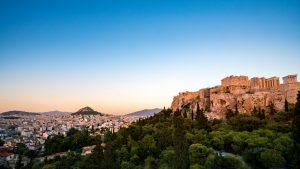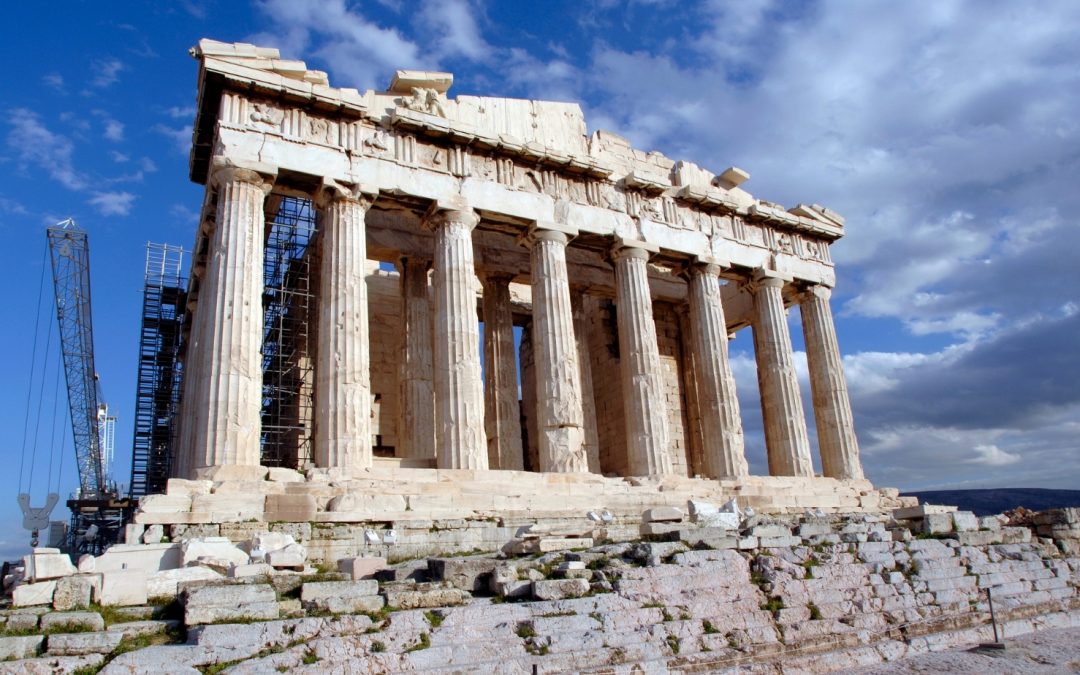In the ancient Greek world, there were two names that transcended the art of painting illusions, Zeuxis and Parrhasius…
In the world of painting, there have been countless “famous” artists over the centuries. Even without any knowledge of the art world, you can probably name a few. Take Michelangelo, sculptor first, but still painted the Sistine Chapel ceiling (“The creation of Adam” being the most iconic part), Leonardo da Vinci, responsible for one the most famous artworks in the world the “Mona Lisa”, and perhaps even Albrecht Dürer who famously rendered his paintings with almost photographic accuracy (“Young Hare” being the perfect example of that). Of course, back in then, there was no internet, no Instagram or Facebook, where one could promote their art. It was a long process of trying to make a breakthrough, and not everyone succeeded. A lot of things became easier by today. For instance, you can find organization to ask “write my history essay for me”, instead of wasting your time on boring staff like research. It wasn’t really until the renaissance where artists became celebrities; however, there were some exceptions in the ancient world. Two painters used the medium in a very interesting way and were masters of illusion, so stay with us to find out more about them.
What is still life painting?
Still life is artwork that depicts still objects. In this form of painting, the subject matter is inanimate and motionless, and commonly depicts some kind of everyday life object like household items, food, plants, jewelry, flowers. Still life can portray the beauty of the everyday life items, but also can contain some symbolic meaning in it, which moves the viewer to search for its deeper meaning. Among the most common themes we can mention: table spreads with food, fruit bowls and flower arrangements to name a few. Although still life developed as a recognizable genre in the 16th century, its origin is in Ancient Greco-Roman arts. Some eminent artists that successfully drew still life are Vincent Van Gogh, Édouard Manet, and Caravaggio, and among them, if we go back to the ancient world, Zeuxis and Parrhasius.

François-André Vincent – Zeuxis Choosing his Models for the Image of Helen from among the Girls of Croton
Zeuxis
Zeuxis was a Greek painter who lived in the fifth century BCE. This innovative artist was born in Heracleia of Pontus, but he moved to Athens where he spent most of his life and studied. Most of his works of art were still life paintings, but he also painted idealized human models. His fruitful career made him rich, which was a rare achievement for that time. Some of his paintings included pictures of the gods like Zeus surrounded by other deities, Pan, and Eros crowned with roses, mythological characters like “A Centaur Family” and the most famous among them “Helen” which he idealized so much, that he used five of the most beautiful models and combined their most attractive characteristics. On top of that, he was even more famous as the master of illusion, using the Trompe-l’œil art technique. This meant conceiving the illusion that the two-dimensional surface actually has three dimensions, by using perspective and shading. His most famous still life painting was an astonishingly lifelike bunch of grapes that deceived birds into flying into it, trying to eat the grapes, convinced it was real. A painting so mighty it challenged reality itself making him a true illusionist.
“Criticism comes easier than craftmenship” – Zeuxis
Parrhasius
Parrhasius of Ephesus is considered one of the most remarkable painters of Ancient Greece. He was notable for his perfectionist outline drawing and it is said that he was the first to deliver animation to faces, and symmetry to paintings. He rendered not just physical appearance but psychological and emotional elements of the subject. It is said that Parrhasius went so far to acquire those elements that he even tortured a slave to create a model for the painting of Prometheus Bound that he made for the Parthenon. Some of his other famous works were a painting of Theseus and his depiction of the Demos. Parrhasius was a mighty rival of Zeuxis, as another extremely talented master of illusion.
A famous anecdote in which a painting competition between the two great rivals was held. Zeuxis created the aforementioned illusion that tricked a flight of birds into trying to eat grapes that he painted, naturally, an amazing accomplishment. He was absolutely certain that he won. However, when Parrhasius asked him to pull aside the curtain to reveal his own painting cloaked under a cloth, Zeuxis tried to, but couldn’t as it turned out it was the painting itself! Parrhasius won and Zeuxis admitted his loss: “I have deceived the birds, but Parrhasius has deceived Zeuxis.”

View to the ancient Acropolis in Athens
The rivalry between Zeuxis and Parrhasius indeed was exceptional; we can even say one-of-a-kind. Both of them represented the marvelous mastery of illusion like none had seen before. These ancient Greek artists were shining examples that proved Greek art was much more advanced than Roman at the time, and anywhere in the known world for that matter. Zeuxis and Parrhasius, truly two ancient masters.
Pliny the Elder and the story of dueling artists Zeuxis and Parrhasius, from Lucas Livingston


